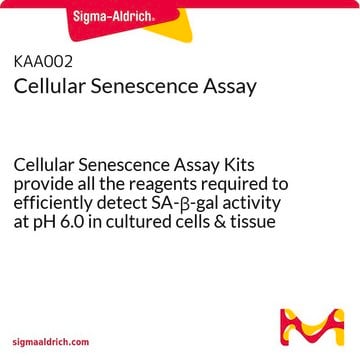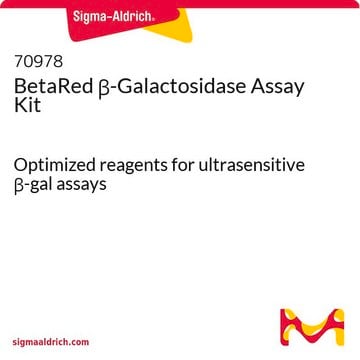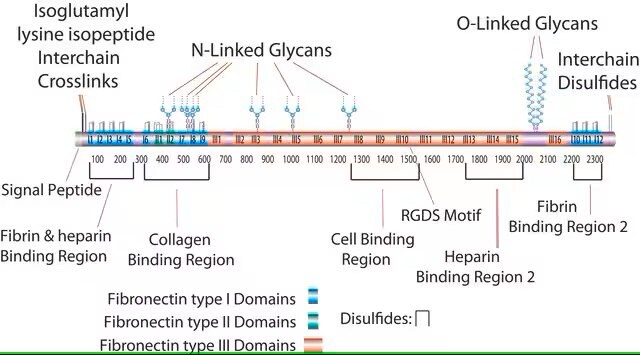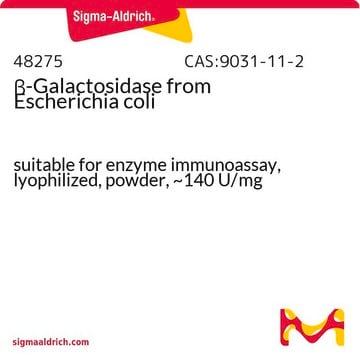The GALS kit, identified by product number F1797, is not tested or recommended for use with a mouse brain that has been fixed using a different fixative for 4 days or longer. The standard kit procedure fixes cells for only 10 minutes, whereas the fixation period used for the mouse brain is 396 times longer than what is recommended in the kit protocol. The kit was never tested for use on a mouse brain fixed using another fixative. Therefore, it is uncertain whether the fixation used for the mouse brain might produce acceptable results
GALS
β-Galactosidase Reporter Gene Staining Kit
Synonyme(s) :
β-galactosidase, LacZ
Sélectionner une taille de conditionnement
545,00 €
Date d'expédition estimée le29 mai 2025
Sélectionner une taille de conditionnement
About This Item
545,00 €
Date d'expédition estimée le29 mai 2025
Produits recommandés
Utilisation
kit sufficient for 100 tests (using a 3.5 cm dish)
Niveau de qualité
Technique(s)
microbe id | staining: suitable
Conditions d'expédition
dry ice
Température de stockage
−20°C
Description générale
Application
Autres remarques
Produit(s) apparenté(s)
Mention d'avertissement
Danger
Mentions de danger
Classification des risques
Acute Tox. 3 Inhalation - Acute Tox. 4 Dermal - Acute Tox. 4 Oral - Aquatic Chronic 3 - Carc. 1B - Eye Dam. 1 - Flam. Liq. 3 - Muta. 2 - Resp. Sens. 1 - Skin Corr. 1B - Skin Sens. 1 - STOT SE 3
Organes cibles
Respiratory system
Risques supp
Code de la classe de stockage
3 - Flammable liquids
Point d'éclair (°F)
132.8 °F
Point d'éclair (°C)
56 °C
Faites votre choix parmi les versions les plus récentes :
Certificats d'analyse (COA)
Vous ne trouvez pas la bonne version ?
Si vous avez besoin d'une version particulière, vous pouvez rechercher un certificat spécifique par le numéro de lot.
Déjà en possession de ce produit ?
Retrouvez la documentation relative aux produits que vous avez récemment achetés dans la Bibliothèque de documents.
Les clients ont également consulté
-
Is the GALS kit compatible with fixed, frozen mouse brain that used a totally different fixative for 4 days or longer?
1 réponse-
Utile ?
-
Filtres actifs
Notre équipe de scientifiques dispose d'une expérience dans tous les secteurs de la recherche, notamment en sciences de la vie, science des matériaux, synthèse chimique, chromatographie, analyse et dans de nombreux autres domaines..
Contacter notre Service technique














